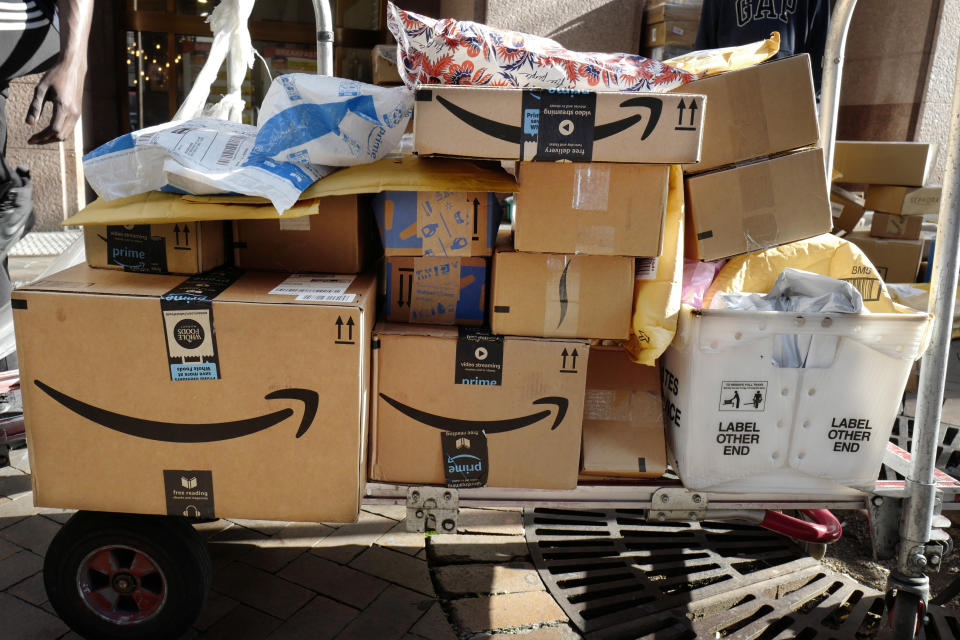Amazon (AMZN) has built its e-commerce empire by making shopping affordable and foolproof. You didn’t like the pan you bought on Amazon? No worries, you had free returns.
However, the days of across-the-board free returns are over: Amazon is instituting a $1 fee on some returns, marking a notable shift from the company’s early days when the ethos was grow-at-all-costs.
Yahoo Finance spoke to five retail experts about this sea change, and they did agree that this was a long time coming and retail at-large is moving in this direction.
“I think the industry should be kissing the ground Amazon walks on for returning the sector to some semblance of economic sanity,” Professor Mark Cohen, director of retail studies at Columbia Business School, told Yahoo Finance. “There’s nothing in this life that’s free, so returns that are free create a tremendous burden for retailers. They’re finally going from a ‘laissez faire’ view… This sort of move had to be inevitable.”
John Talbott, senior lecturer at Indiana University’s Kelley School of Business, noted that Amazon’s newly-minted return fees are also directed towards a specific sort of customer.
“I think this effort is targeted at consumers that are gaming the system,” Talbott told Yahoo Finance. “By that I mean, they are consistent, testers, and returners… By doing this, Amazon is essentially taxing the behavior of a small part of the overall population, and being better able to serve those that are legitimately acquiring a product or service, and fully intend to use it.”
The data on what returns cost retailers is staggering: In 2022, customers sent back around 17% of the merchandise they bought, worth $816 billion, per National Retail Federation data.
“These returns are such a burden for retailers, not only as a logistical cost, but as a supply chain problem,” Cohen added. “Merchandise doesn’t return to the same warehouse, and that merchandise also usually has to be resold as a distressed product.”
No-return-fee policies just weren’t built to last, CEO of Merchandising Metrics Jeff Sward told Yahoo Finance.
“It was absolutely inevitable,” he said. “‘Free’ became the most expensive word in retail. Free shipping and free returns have been brilliant as customer acquisition tools, but they now need to be looked at as an investment in building a customer base. That investment needs to see some ROI at some point. Free returns provided a sort of safety net to get people comfortable shopping online – mission accomplished. The comfort of free returns has put the return rate through the roof, and it’s unsustainable.”
‘The whole idea is to change consumer behavior’
Amazon’s return fee hike will likely alter consumer behavior in some ways — the question is in what way and by how much. In any case, changing how some consumers interact with Amazon — especially those prone to testing and returning products — is exactly what the company is hoping for.
“The whole idea is to change consumer behavior, if only subtly,” Spieckerman Retail President Carol Spieckerman told Yahoo Finance. “The fees apply when alternative locations, including Kohl’s or Whole Foods, are closer. Given the policy details, Amazon may not be attempting to offset return costs so much as increase the likelihood that shoppers will make impulse purchases that benefit Amazon and its partner retailers. The nominal fee isn’t enough to infuriate shoppers and Amazon’s competitors may even wish it were higher.”
Feedback Group Principal Brian Numainville agreed, telling Yahoo Finance that fees of less than $2 will likely not be enough to trigger a rebellion, especially since these fees only apply in select situations. However, there will be some annoyance to go around, and the products that consumers actually purchase may change over time, as well.
“While it could be an irritant for some shoppers and many dislike added fees, it’s not likely that this nominal return fee will cause a tremendous amount of upheaval in consumer behavior, outside of perhaps changing where some shoppers return Amazon items to fit within the other ‘no-fee’ options,” Numainville said. “A bigger issue that I believe could have a more noticeable impact is the ‘frequently returned‘ marker on some product pages, which could sway a shopper to avoid buying an item, wondering why it is frequently returned. That could shift consumer behavior away from these items and result in different purchasing outcomes.”
For Columbia’s Cohen, it all goes back to inevitability: “I think some customers will be put off a bit, but I also think they’ve been waiting for this day… Amazon has been quietly disenfranchising customers for years who are criminally involved or just playing with them. They have to start paying attention their underlying profitability, and this is a step in the right direction for them.”
‘It’s hard to put the genie back in the bottle’
In all likelihood, retailers across the board will likely use this as an opportunity to start charge for returns.
“I think the industry is going to move in lockstep with Amazon,” said Cohen. “I think the move will be slow, but other retailers will move in the direction that Amazon is going, using Amazon as a shield.”
Upping return fees will remain a delicate dance between companies and their customers.
“More retailers are attempting to implement return fees, but all know they must tread lightly,” said Spieckerman. “It’s hard to put the genie back in the bottle, and Amazon released it in the first place.”
The next phase of e-commerce will likely look rather different, as the business model is in flux.
“The lack of profitability in the universe of e-commerce is well known,” Sward said. “Returns aren’t the only factor in that lack of profitability, but they are a big chunk of it. The e-commerce business model is in the middle of an evolutionary process that’s seeking sustainable profitability.”
But there’s one thing you can be sure of: The days of indiscriminate free returns are over.
“The industry is moving away from this ‘anything goes, anytime’ philosophy that’s just a killer financially,” Cohen said. “I think this is the beginning of a host of changes we’re going to see as the industry gets on better footing economically.”
Allie Garfinkle is a Senior Tech Reporter at Yahoo Finance. Follow her on Twitter at @agarfinks and on LinkedIn.
Read the latest financial and business news from Yahoo Finance
Download the Yahoo Finance app for Apple or Android
Follow Yahoo Finance on Twitter, Facebook, Instagram, Flipboard, LinkedIn, and YouTube






